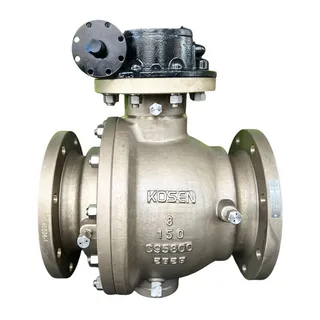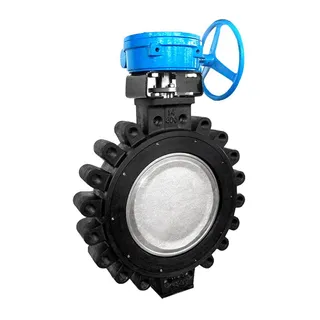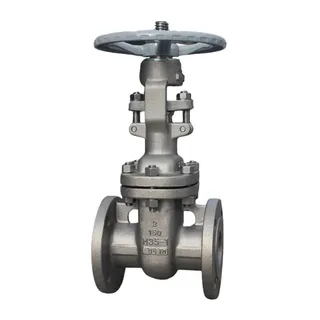In modern industrial production, pipeline systems play a crucial role. They are like the blood vessels of the human body, responsible for transporting various media, from liquids to gases, from oil to water. However, just as blood vessels need to prevent the backflow of blood, pipeline systems also need to prevent the reverse flow of media to ensure system safety and efficiency. At this point, the axial flow check valve becomes an indispensable guardian.
The axial flow check valve, also known as a through-flow check valve, is a valve that automatically opens and closes its disc relying on the flow of the medium itself. Its main function is to prevent backflow of the medium and protect equipment in the pipeline system from damage. This type of valve is widely used in compressors, pumps, and other devices or pipelines and is an important component in industrial systems.
The working principle of the axial flow check valve is relatively simple but contains sophisticated design. When the forward-flowing medium reaches the position of the valve disc, the flow is partially obstructed. At this time, part of the medium's kinetic energy is converted into pressure energy, pushing the valve core and opening the valve. As the flow and pressure in front of the valve gradually decrease, the spring force and back pressure begin to take effect, pushing the valve closed, thus preventing backflow.
The operational characteristics of this valve are very unique. Under conditions of large load variation, the opening and closing frequency is very low. Once the valve is in an open or closed state, the service cycle is usually long. However, when a "switching" requirement occurs, the valve must operate flexibly and achieve tight shutoff. This requirement is more stringent than that of common mechanical motions.
After understanding the basic working principle of the axial flow check valve, we next explore its key features. These characteristics not only determine the valve's excellent performance in industrial applications but also allow it to stand out among many types of valves.
Sealing is the core feature of the axial flow check valve. For small-diameter valves, due to convenience in size and structure, the valve seat is usually directly machined on the valve body to achieve sealing, and a tight seal can be easily achieved. However, as the diameter increases, the difficulty of machining the valve seat increases non-linearly. Therefore, for large-diameter check valves, the valve seat is usually removed and manufactured as a separate part. Although this design increases manufacturing difficulty, it also ensures better sealing performance.
The valve body flow passage structure and flow elements adopt the Venturi principle and streamlined design. This design gives the valve a small flow resistance coefficient and large flow capacity, which is the key factor for the axial flow check valve to dominate in long-distance pipeline transport. The combination of streamlined valve sleeve shape and cavity streamlined design ensures full and consistent flow area, low pressure loss, stable flow, and no cavitation.
The dynamic characteristics of the axial flow check valve are excellent. Accurate spring design and ingenious configuration of the flow area allow the valve to respond quickly to reverse flow. A short closing stroke ensures the valve closes without impact, and synchronous response to reverse flow prevents water hammer. Compared with other types of check valves, the axial flow check valve can reduce or even avoid water hammer damage, protecting the pipeline system from harm.
The axial flow check valve generates very low noise during operation. Under negative pressure from the flowing medium and spring thrust, the valve disc returns without direct impact from the medium on its back. This design makes the axial flow check valve a low-noise valve, especially suitable for noise-sensitive environments.
The valve disc is supported at both ends, and the special surface treatment and structural design of the valve disc shaft overcome common jamming phenomena during operation, ensuring smooth opening and closing. This design also prevents defects caused by gravity, such as misalignment of the valve disc, uneven force on the sealing surfaces, or inconsistent mating of sealing surfaces between actions, keeping the sealing surfaces in optimal force and contact condition.
Selecting the appropriate axial flow check valve is crucial for ensuring pipeline system safety and efficiency. The following key factors should be considered.
Installation Position: Determine the valve's position in equipment, devices, or pipelines, such as power equipment outlet, bypass system, venting system, etc. Different positions may have different valve requirements.
Working Conditions: Clarify the working conditions of the valve, including the medium, working pressure, temperature, and environment. These factors directly affect valve selection and material choice.
Connection Type: Determine the nominal diameter and connection type with the pipeline, such as flange, thread, or welding. Different connection types have different installation and maintenance requirements.
Fluid Characteristics: Consider requirements such as allowable pressure drop and sealing grade. These affect valve performance and efficiency.
Installation Dimensions: Determine installation dimensions, shape, nominal diameter, connection method, connection size, outer dimensions, or mass limitations, which affect installation and spatial requirements.
Service Life: Determine the required service life. Based on system operating conditions and maintenance plans, choose appropriate valve materials and designs to ensure long-term reliable operation.
Material Selection: Select valve body and internal materials based on transported medium, pressure, temperature, and environmental conditions, such as carbon steel, alloy steel, or stainless steel. Material choice directly affects durability and corrosion resistance.
Compared with other check valves, axial flow check valves have several significant advantages.
Rapid Closure: The short stroke, especially for large-diameter valves, allows rapid closure, effectively preventing water hammer and protecting pipelines.
Low Flow Resistance: Venturi-style internal design ensures the medium gradually contracts and expands through the valve, minimizing turbulence. This reduces flow resistance, increases flow coefficient, lowers pressure loss, and is ideal for long pipelines.
Low Noise: Minimal mechanical vibration and no direct medium impact on the valve disc back result in low noise.
Excellent Sealing: The valve achieves tight shutoff. Both small and large diameters ensure reliable sealing through precise design and manufacturing.
Fast Dynamic Response: The valve responds quickly to reverse flow, short stroke ensures rapid valve disc response, and reduces reverse flow velocity through the valve, effectively preventing water hammer.
Axial flow check valves are widely used in oil and gas gathering and transmission networks, especially at pump outlets. They are favored for their smooth operation, low flow resistance, low water hammer pressure, good flow characteristics, rapid response to pressure changes, low noise, and excellent sealing, making them the preferred choice in domestic and international oil and gas pipeline systems.
Oil & Gas Industry: Used at pump outlets and key positions in pipelines to prevent backflow and protect equipment. Low flow resistance and high sealing performance make it ideal for long-distance pipelines.
Petrochemical Industry: Used in pipelines transporting various media, ensuring system safety and efficiency. Low noise and rapid response allow stable operation even in noise-sensitive environments.
Power Industry: Applied in cooling water systems, steam systems, etc., to prevent backflow and protect equipment. High sealing and low resistance allow reliable operation under high pressure and temperature.
Axial flow check valves can be classified by valve disc structure into sleeve, disc, and ring-disc types, each with unique characteristics and applicable scenarios.
Sleeve Type: Light valve disc, sensitive operation, short stroke, short structural length, low-pressure seal and opening, shock-free closure, low noise, spring not in direct contact with the medium. However, two sealing surfaces increase machining, grinding, and maintenance difficulty, with some pressure loss.
Disc Type: Generally used for large-diameter pipelines, such as long-distance pipelines or compressor outlets, suitable for horizontal or vertical installation. Sensitive operation, short stroke, shock-free closure, low noise, low fluid resistance, rapid response, single sealing surface is easy to manufacture. Particularly suitable for medium and small pipeline systems in natural gas, petrochemical, and power plants requiring low noise and no leakage.
Ring-Disc Type: Very short valve disc stroke, spring load assists rapid closure, reducing water hammer pressure. The structure is more complex with larger flow resistance, usually used in vertical pipelines.
As an important industrial valve, the axial flow check valve plays an indispensable role in modern industry due to its excellent performance and wide application. By understanding its working principle, key features, and selection points, we can better select and use axial flow check valves to ensure the safety and efficiency of pipeline systems. With continuous technological advancement, axial flow check valves will continue to be optimized and innovated, providing more reliable protection for industrial production.



